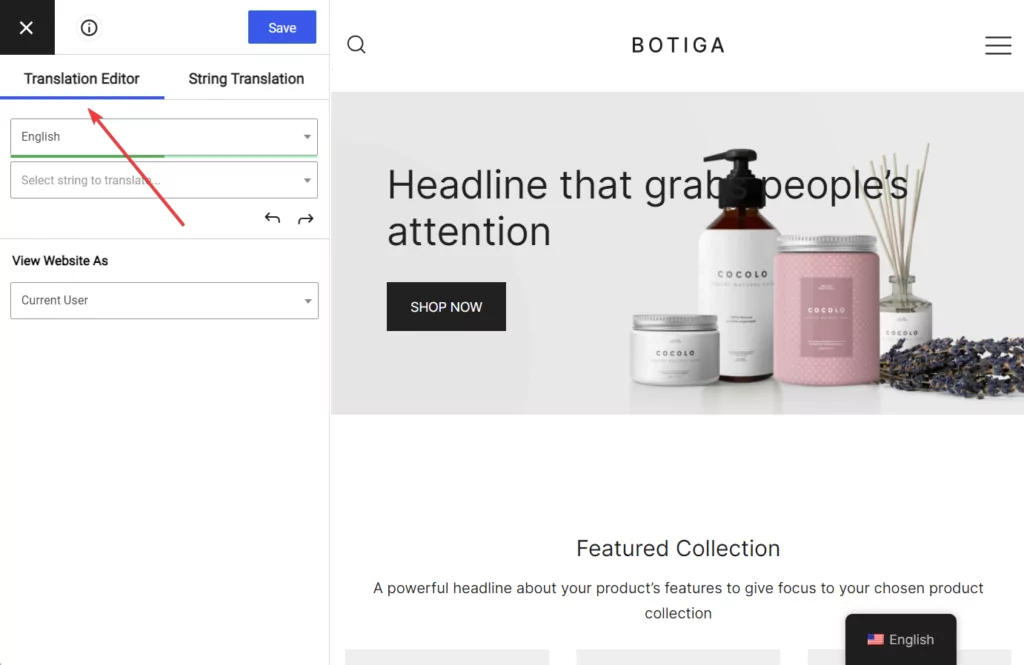
In this post
Are you looking for ways to build a multilingual social media presence?
Whether you want to convert casual visitors to loyal customers or expand your business to newer territories, adding multilingual social media content (along with other localization strategies) is an excellent way to ensure rapid growth for your business.
This article covers some of the tried and tested methods for building a multilingual social media presence. But first, we are going to look at how exactly a multilingual social media presence benefits businesses.
Let’s dive right in.
Benefits of Building a Multilingual Social Media Presence

Building a multilingual social media presence helps accelerate business growth. Here’s how:
Better Reach: By communicating in multiple languages, you can reach a broader audience that speaks different languages. It opens doors to new opportunities for growth and global expansion.
Improved Following: Tailoring your content to different cultures shows respect for diversity and establishes your brand as inclusive, and modern. The audience is likely to recognize the effort you put into catering to their language preferences and will eventually start trusting your brand, leading to more engagement and following on social media.
Increased Conversions: By reaching a broader demographic through multilingual content, businesses can improve user satisfaction leading to increased purchase decisions and better conversion rates.
Competitive Advantage: Having multilingual social network accounts can give you an edge over competitors who only operate in one language. It allows you to attract a more diverse customer base, boosting your revenue collection and business growth.
Business Longevity: Multilingual content not only expands market reach and conversion rates but also fortifies the business against risks such as local market fluctuations and economic downturns contributing to long-term success and longevity.
Broadly speaking, these are some of the benefits of having a multilingual presence in social media for a business.
How to Build a Multilingual Social Media Presence
To build a multilingual social media presence, you need to carry out the following steps:
1. Define Target Audience
Setting a target audience is essential for creating focused and effective strategies that resonate with the right people, drive the right engagement, and ultimately lead to success.
Here are the steps you need to take to define the target audience:
Identify Demand: To choose a target audience, you need first to conduct thorough market research and identify regions where your products or services are in demand.
Audience Characteristics: You will also need to determine characteristics such as age, gender, income level, and interests of potential audience to ensure that your social media content is tailored to meet their specific needs and preferences.
Language proficiency: Proceed by determining the language proficiency levels of your target audience. For instance, in some urban areas, people speak a mixture of English and their native language which means you need to create content that reflects this particular preference.
Competitor Study: It’s also important to study your competitors’ multilingual social network strategies to gain insights into what is working well, areas for improvement, and potential opportunities to differentiate your approach.
2. Set Goals

It’s important to set goals because building a multilingual social media presence requires a lot of time and effort.
Setting goals allows you to be constantly aware of what you are working towards to track your progress to avoid frustration and to know that you are headed in the right direction.
You can start by defining what you aim to achieve with your multilingual social media presence.
Do you want to increase brand awareness or drive website traffic? Do you want to generate leads, or boost sales?
All these may seem like good goals to chase but it’s important to identify one or two main goals.
To make that choice you need to look into your overall business objectives. For instance, a startup may want to increase global user acquisition and engagement while a mid-sized chain company may seek to boost brand loyalty and revenue collection.
After defining your goal, you need to identify reasonable quantifiable targets such as increasing the follower count by 20% among Spanish-speaking users within six months or improving click-through rates by 15% among German language users by the end of the quarter.
It can be tricky to identify reasonable quantifiable targets because you need to consider various factors to ensure that your targets are both challenging and achievable. You need to:
- Analyze your current performance
- Look at historical data to understand typical growth rates
- Conduct a competitive analysis to benchmark your performance
- Consider the resources available to support your efforts
- Analyze the market to understand the viability of your success
3. Choose the Right Platforms
There are multiple social media platforms. Typically businesses don’t focus on every platform because not all platforms suit all business types and/or you may not have the resources to build your social media presence on all platforms.
When determining which social media platforms are suitable for a business, it’s essential to consider factors such as the target audience, business goals, type of content, and resources available.
Target Audience: Different social media platforms attract different user demographics. For example, a fashion brand targeting young, fashion-conscious individuals might find platforms like Instagram and Pinterest more suitable for their business.
Business Goals: A B2B software company focusing on establishing itself as an industry leader might prioritize platforms like LinkedIn for showcasing expertise and establishing professional credibility.
Type of Content: Evaluate the type of content your business would want to share on social media. For example, a food blog would want to share high-quality food images and recipe videos. In that case, platforms like Pinterest and YouTube where visual content performs well are more suitable.
Resources Available: A small local business with limited resources may opt for platforms like Facebook and Twitter which are easier to manage than platforms requiring more visual content production like YouTube.
We recommend choosing multiple platforms (minimum two) to ensure that your business can mitigate risks associated with relying solely on one platform.
4. Use Translation Tools & Hire Translators

After choosing the right social media platforms, you need to decide whether you want to rely on translation tools or hire professional translators to create multilingual social network posts.
Translation tools are often more budget-friendly compared to hiring professional translators. Tools offer quick translations and automate processes to produce large volumes of content but they are more suitable for texts with relatively low complexities. They may not always capture the context, or cultural sensitivities required for effective communication.
Professional translators ensure that they maintain the original meaning, tone, and nuances of the culture to avoid potential misunderstandings and promote positive brand image and credibility. However professional translators are expensive and their manual translations are a time-intensive process.
You can choose to use translation tools or hire professional translators but you can also take a hybrid approach. For instance, you use tools to mass-produce social media posts but run them by a translator to ensure accurate translations.
5. Localize Visual Content
When building a multilingual social media presence, it’s important to ensure that your visuals resonate with diverse audiences across different languages and cultures.
Here are a few things to consider when creating visual content for your multilingual social media accounts:
- Use neutral and universally understood languages, such as images, icons, and symbols that convey messages without relying on text
- When localizing images, consider localizing elements such as background, clothing styles, etc to better reflect local people and customs
- Understand cultural nuances and preferences to avoid using visuals and text overlays or captions that may be inappropriate, offensive, or misunderstood
- Be mindful of color symbolism as certain colors may have different meanings or connotations in a different region
- Incorporate holidays, festivals, and cultural events specific to your target regions to connect with audiences
- Stay updated on local trends, memes, and popular references in each target market to create visual content that feels current and relatable
We recommend conducting localization testing to gather feedback from native speakers and ensure that your visual content is culturally appropriate and effectively conveys your message in each language.
6. Use Hashtags
Using hashtags on social media platforms is necessary because it helps increase content visibility by making them discoverable to users searching or following those tags.
By creating branded hashtags you can boost brand recognition and encourage user-generated content related to your brand or campaigns.
Also, leveraging trending or popular hashtags can keep your content current and aligned with ongoing conversations, events, or viral trends, increasing the likelihood of engagement and visibility.
You can use hashtags to track and measure the performance of your social media campaigns and gain insights into what resonates with their audience.
7. Collaborate With Local Influencers
Local influencers have a dedicated following that trusts their recommendations. Partnering with them can help expand your reach, establish credibility, and build trust among multilingual communities.
To start the collaboration process, look for influencers who align with your brand values and target demographics.
Then reach out to influencers with personalized messages outlining the benefits of collaboration and be sure to work with them closely to develop content that resonates with their audience.
8. Be Mindful About Posting Times

Figuring out the ideal posting times for different language groups is important because posting at the right times can significantly impact the reach and engagement of your content.
To know the ideal time for posting on social media for different language groups you need to research the peak activity hours for each language group you are targeting.
Also, you need to be aware of local customs, events, and holidays as they impact social media usage patterns.
There are tons of research on ideal posting times online. You could follow those and also experiment on your own to identify when your audience is most active and responsive.
Once the peak hours are down, develop a posting schedule that aligns with those hours while maintaining a regular cadence. This helps in establishing expectations among your followers and keeps them engaged consistently.
9. Monitor Results & Optimize Strategy
Monitoring is an important step in building a multilingual social media presence.
It tracks the performance of your content, helps understand audience preferences, and makes informed decisions on how to optimize your social media strategy.
Optimization of strategy is required to ensure that your multilingual social network efforts align with your business objectives.
You can make use of analytics tools provided by social media platforms like Facebook Insights, Twitter Analytics, or third-party tools like Google Analytics to gather valuable data on content performance and audience behavior.
It’s important to note that while continuous monitoring and optimization are crucial, you must allow sufficient time for strategies to mature and yield results.
So try and strike a balance between proactive refinement and strategic patience.
10. Localize Your Website
When building a multilingual social media presence on the internet, consider localizing your business website.
Business websites are an important part of your online presence.
When your social media followers seek information about your business they are likely to encounter your business website (assuming that you have one).
It would be wise to localize your business website to the language groups you are targeting.
Just as we advised you to take a hybrid approach of using both translation tools and professional translators to translate social media content, here too we offer the same advice.
We recommend using our powerful and popular TranslatePress plugin to automate translations and manually improve translated texts using the plugin’s frontend editor.
TranslatePress Multilingual
You can carry out the manual translations yourself or hire certified translation agencies or freelance translators to do it for you.

Conclusion
Building a social media presence can help enhance brand visibility, reach a diverse audience, increase revenue, and establish longevity for your business.
To build a successful social media presence, you need to carry out the following steps:
- Define target audience
- Set goals
- Choose the right platforms
- Use translation tools & hire professional translators
- Localize visual content
- Use hashtags
- Collaborate with local influences
- Be mindful of posting times
- Monitor results and optimize strategy
- Localize your website
It takes a lot of time and effort to build a significant social media presence but given a consistent effort, businesses can reap substantial rewards in the future.
If you have any questions about multilingual social media presence, let us know in the comment section below.


